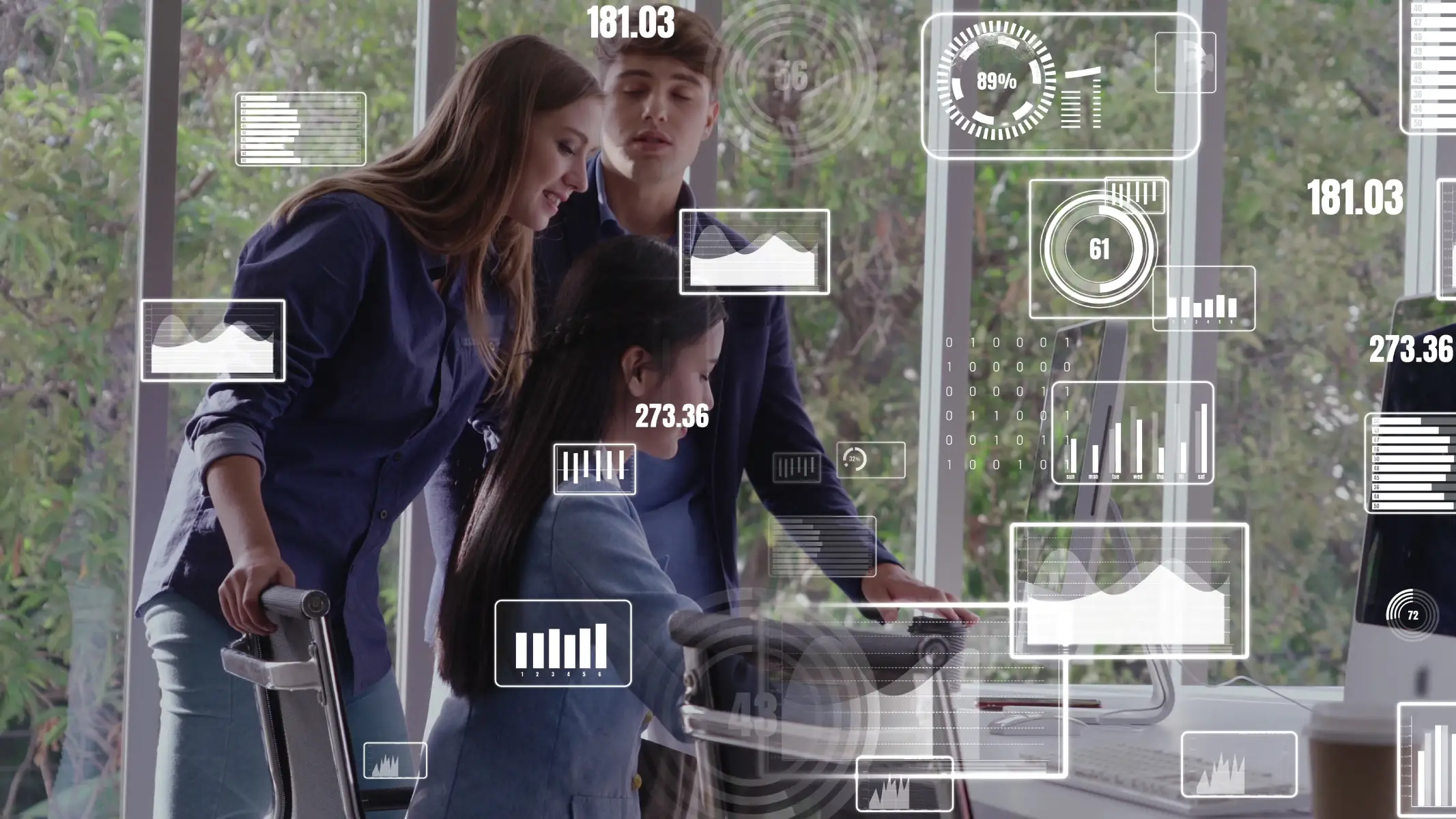In the wake of the COVID-19 pandemic, workplaces around the world have entered a new era defined by challenges and opportunities tied to employee well-being. The pandemic disrupted not only operations but also the mental health of employees, ushering in widespread anxiety, burnout, and feelings of uncertainty. As organisations rebuild and adapt, new approaches to mental health and workplace wellbeing strategies are essential for both individual and business success.
The global workforce is now demanding better mental health support, and the companies that prioritise sustainable corporate wellness programs will be the ones that attract and retain top talent, boost engagement, and ensure long-term profitability. This whitepaper explores the critical importance of mental health in the post-pandemic era, provides actionable strategies for supporting workplace well-being, and highlights the benefits of sustainable mental health initiatives tailored to evolving employee needs.
Redefining Workplace Wellbeing in the Post-Pandemic World
The pandemic reshaped how employees think about their well-being and pushed concerns about mental health to the forefront. Juggling personal and professional responsibilities, physical isolation, increased workloads, and health anxieties heightened employee stress and reshaped workplace expectations.
Today, organisations are adjusting to shifts in working environments such as hybrid and remote models, while trying to create cultures that champion post-pandemic mental health. Traditional wellness strategies are simply no longer sufficient. Businesses need innovative approaches that prioritise resilience, flexibility, and comprehensive mental health support.
The Impact of COVID-19 on Employee Mental Health
- Increased Burnout: The COVID-19 pandemic led to heightened workloads, blurred boundaries between work and home life, and increased employee exhaustion.
- Rising Anxiety and Depression: According to the World Health Organisation, the pandemic triggered a 25% global increase in anxiety and depression.
- Isolation and Loneliness: Remote work made collaboration convenient but also contributed to feelings of disconnect, especially for employees dependent on social connections at work.
- Job Insecurity: Concerns about layoffs and organisational changes continue to place financial and emotional stress on employees.
Key Takeaway: Addressing these challenges is critical for business success as poor mental health impacts productivity, morale, and retention.
Why Investments in Workplace Wellbeing Matter
The benefits of prioritising mental health and well-being resonate far beyond individual employees. Organisations that institute sustainable wellness strategies see improvements in team dynamics, innovation, financial performance, and brand reputation.
- Enhanced Productivity: Mentally healthy employees are more focused, engaged, and efficient when completing tasks.
- Lower Absenteeism and Presenteeism: Wellness programs reduce the number of sick days and instances where employees are at work but unable to perform effectively.
- Stronger Employee Retention: Companies with supportive cultures have significantly lower turnover rates, saving on hiring and training costs.
- Improved Company Reputation: A strong focus on well-being builds a brand that stands out to potential recruits and employees who value workplaces that prioritise their mental health.
The Core Components of Sustainable Workplace Wellbeing Strategies
Sustainability is key when developing mental health initiatives that stand the test of time. A one-off workshop or ad-hoc approach is unlikely to yield lasting benefits. Instead, effective workplace well-being strategies should involve deliberate planning, implementation, and measurement.
1. Embed Mental Health into Organisational Culture
Organisational culture is the foundation of wellness. Employees must feel that mental health is not just an HR function but a priority that leaders and peers consistently uphold.
How to Create a Mental-Health-First Culture:
- Make mental health training a leadership standard to equip managers with the skills to support team members effectively.
- Foster open conversation around mental health, breaking the stigma and encouraging employees to seek help when needed.
- Celebrate and reward behaviours that promote well-being, such as taking adequate breaks or setting work-life boundaries.
Example: Organisations like Unilever run “mental health ambassadors” initiatives where trained employees promote peer-to-peer support, ensuring mental health remains integral to daily operations.
2. Focus on Flexible Working Arrangements
The pandemic demonstrated that flexibility greatly impacts mental health and performance. Employees now expect options like hybrid schedules, remote work, and flexible hours to reduce stress while balancing responsibilities.
How to Implement Flexibility Effectively:
- Offer hybrid work models that allow employees to choose where they are most effective—whether at home, in the office, or a combination of both.
- Use technology to ensure collaboration is frictionless, even for remote staff. Platforms like Microsoft Teams and Zoom help employees stay connected.
- Encourage leaders to model flexible practices, such as flexible hours or non-linear working days.
Impact: Flexibility reduces stress caused by long commutes, personal responsibilities, or rigid schedules, contributing to better mental health and higher morale.
3. Develop Responsive Corporate Wellness Programs
Modern corporate wellness programs should go beyond fitness challenges or occasional wellness campaigns—they must focus on preventive care and ongoing mental health monitoring.
Features of an Effective Corporate Wellness Programme:
- Employee Assistance Programmes (EAPs): Provide free, confidential counselling and mental health support to employees facing challenges.
- Mindfulness and Stress Management Training: Offer workshops or apps like Headspace that teach stress reduction techniques.
- Health Screening Services: Include mental health assessments as part of routine employee check-ups.
- Digital Wellness Tools: Use platforms like Calm or BetterUp to offer virtual coaching, therapy, or personalised well-being exercises.
Example: PwC introduced digital wellness platforms globally, enabling employees to access mindfulness tools, coaching sessions, and guided resilience exercises on demand.
4. Promote Social Connection in Remote and Hybrid Workspaces
Workplace friendships enhance satisfaction and reduce the emotional toll of work-related stress—but remote models have fractured many traditional social ties. Employers must rebuild these connections intentionally in hybrid workplaces.
Strategies for Building Social Connections:
- Organise virtual coffee sessions or in-person activities that encourage interdepartmental relationships.
- Recognise social connection as a productivity booster—do not treat social time as a “distraction.”
- Introduce collaborative projects that require frequent interaction, fostering teamwork and camaraderie.
The Outcome: Strong interpersonal connections keep employees engaged, reduce feelings of isolation, and boost positivity.
5. Prioritise Leadership Wellbeing
Healthy leaders lead healthier teams. Without mental resilience and balanced workloads, leaders risk burning out—then spreading that stress to direct reports.
Support Leaders Via:
- Resilience training that equips leaders with stress-management techniques.
- Regular coaching or mentoring to ensure leaders feel supported in their roles.
- Tools that help leaders spot signs of burnout not only in themselves but also in their teams.
Result: Leaders who model well-being inspire teams to prioritise their own mental health.
Measuring the Success of Workplace Wellbeing Strategies
To ensure the success of any well-being initiative, it is essential to measure both its tangible and intangible outcomes. Organisations need reliable metrics to determine whether their post-pandemic mental health strategies drive genuine progress.
Key Metrics to Track
- Engagement Scores: Check employee engagement through surveys and pulse feedback. Teams that feel supported tend to exhibit higher engagement metrics.
- Absenteeism and Presenteeism Rates: Track absences and presenteeism (working while unwell but underperforming). Successful well-being strategies lead to reductions in both.
- Employee Turnover: Retention rates clearly demonstrate how well mental health initiatives succeed in fostering staff loyalty.
- Employee-Reported Satisfaction: Use anonymous surveys to gauge how employees perceive their mental health support systems, EAPs, flexibility policies, or leadership.
- Productivity Levels: Well-rested, supported employees are more productive and creative. Monitor outputs across teams after wellness programs are implemented.
- Healthcare Cost Reduction: A decrease in claims filed for stress-related or chronic conditions can signify improved workforce well-being.
Benefits of Employee Wellbeing Programs
- Increased Retention: Employees are significantly more likely to remain with companies that provide mental health support effectively. Gallup found that organisations with high well-being scores see 81% higher retention rates.
- Improved Performance: Teams supported by wellness measures report 21% higher productivity—a clear advantage in competitive industries.
- Enhances Employer Reputation: With a focus on corporate wellness, organisations position themselves as market leaders, attracting talent aligned with their values.
- Cost Savings: Investment in workplace well-being reduces absenteeism, presenteeism, and turnover costs—leading to quantifiable financial returns.
Corporate Case Studies
Case Study 1: Google
Google’s holistic “gPause” program encourages mindfulness across teams, offering workshops and apps that improve focus and reduce burnout. As a result, Google employees rank among the most satisfied globally.
Case Study 2: Deloitte
Deloitte implemented mental health-focused leadership training, normalising open discussions about anxiety and burnout. Surveys show significant increases in team engagement and productivity across regional offices.
Case Study 3: Lloyds Banking Group
Lloyds offers flexible work policies complemented by EAPs. The investment saw a 16% drop in retention costs and a sharp decrease in unscheduled absences.
Richard Reid: A Thought Leader in Workplace Wellbeing
Richard Reid is an industry expert in creating sustainable workplace wellbeing strategies, specialising in post-pandemic transformations. With years of expertise in delivering tailored wellness programs, training leadership, and developing resilience initiatives, he helps businesses develop thriving teams.
Why Work with Richard Reid?
- Custom Solutions: Bespoke well-being frameworks tailored to organisational size, needs, and challenges.
- Proven Impact: Richard’s initiatives deliver measurable results, including improved retention, morale, and mental health scores.
- Holistic Approach: By integrating resilience training, digital solutions, and leadership coaching, Richard ensures well-being is woven into every layer of the organisation.
Transforming Mental Health in Organisations
Post-pandemic trends clearly signal that mental health is now a priority for businesses worldwide. From addressing burnout to developing hybrid-friendly wellness initiatives, the key to sustainable success lies in supporting employee mental health holistically.
The most effective organisations will move beyond superficial solutions, integrating wellness into leadership, team operations, and daily practices. Comprehensive corporate wellness programs create resilient workplaces that thrive no matter the challenges.
For businesses ready to invest in their greatest asset—their people—Richard Reid provides world-class expertise to implement impactful and sustainable mental health solutions. Contact Richard today to begin your journey toward a healthier, more supportive workplace.










